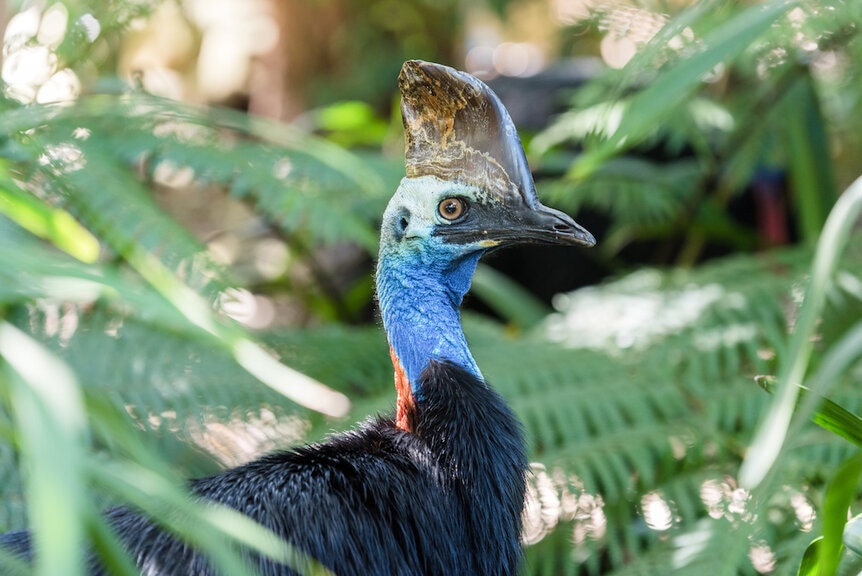Create a free profile to get unlimited access to exclusive videos, sweepstakes, and more!
A Cassowary, the "World's Most Dangerous Bird," Emerges on Australian Beach
That's a dinosaur, and it went for a swim!
Remember the iconic scene in Jurassic Park when doctors Sattler, Malcolm, and Grant first set eyes on a dinosaur? They see it before we do, so our first experience begins through their eyes. Grant (Sam Neill) sees it first and he stands jerkily in the backseat of the Jeep. We can see a mixture of awe, disbelief, and a little bit of fear, even through his sunglasses. Sattler (Laura Dern) is enamored by an extinct plant leaf when Grant grabs her head and physically turns her around. She stands too, mouth agape, as a sauropod struts across the open landscape.
RELATED: If Dinosaurs Went Extinct, Why Are There Still Birds?
A similar scene played out recently on a beach in Queensland, Australia, when a cassowary – a living dinosaur if we’ve ever seen one – emerged from the ocean. Onlookers initially mistook the animal for a turtle or a shark fin, only to be shocked when a massive flightless bird rose from the water, shook itself off, and walked onto shore.
Cassowaries Are Living Dinosaurs... and They Can Swim!
The incident was reported in the Bingil Bay Campground, part of Australia’s Cassowary Coast Region, on October 31. After emerging on land, the bird rested beneath the shade of a tree, its legs shaking from apparent exhaustion. It hung out for about half an hour, according to witnesses, then went about its business.
RELATED: Dinosaur Pets! Ancient Humans Hatched and Raised Giant Dino-Birds
“Cassowaries can swim and will take to the water to cross from one side of a river to the other, or if they feel threatened by domestic dogs or another cassowary through a territorial dispute. We’re not sure how long this animal was in the water or why it went for a swim but the footage is astonishing," said Stephen Clough, a wildlife officer for the Queensland Parks and Wildlife Service, in a statement.
Cassowaries are the third largest bird in the world, after only the emu and the ostrich, and they are not to be trifled with. While they are mostly herbivorous, they will eat anything they can get their beaks around, including reptiles, mammals, and fish. Their bodies are covered with dense feathers to protect them from the elements of their rainforest environments, but they have brilliant coloration along the face, head, and neck. And all of that is topped with a casque, a keratin-covered spongy crown atop the head.
RELATED: Dinosaurs May Have Been on Their Way Out Well Before the Asteroid Hit
Despite their prodigious size, Cassowaries mostly keep to themselves, to the point that they are quick to flee and difficult to study. Their aversion to people, however, won’t stop them from kicking a figurative hole through your chest if threatened. Each of a cassowary’s three toes are tipped with four-inch claws and those toes are at the ends of powerful legs. Cassowaries regularly run at speeds in excess of 30 miles per hour and can jump more than 7 feet into the air. All of which is to say if you see one, keep your distance and let it go on its way unperturbed. It’s more scared of you than you are of it, and it has the weapons and the strength to do something about it.
If you want to see a dinosaur up close, might we recommend the Jurassic World collection, streaming now on Peacock.
































